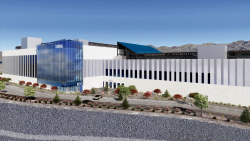The Arleigh Burke destroyers play vitally important roles in the carrier strike groups they are attached to.
The US Navy’s proposed Fiscal Year 2026 budget is under scrutiny, as legislators in the House and Senate assert that the so-called “skinny budget” is insufficient. In two hearings on the hill this week, lawmakers communicated to the Pentagon that the service’s smaller proposed allocations for shipbuilding projects could be problematic. However, Navy Secretary John Phelan tried to reassure these legislators about the potential negative effects of the president’s fiscal year 2026 budget request.
According to Phelan, “I have more ships than our shipyards can handle for the next 10 years, whether it’s a destroyer, whether it’s a tanker, whether it’s an oiler, whether it’s a submarine. So, I am not worried about the demand signal we have.” Sen. Roger Wicker (R-Miss) called out the budget, calling it overly reliant on the reconciliation bill shipbuilding money that is still under consideration by the Senate.
“I am disturbed by the shipbuilding account, which plummeted to $20.8 billion from last year’s $37 billion,” Wicker stated while chairing a Senate Armed Services Committee hearing on the Navy budget. “This shortfall reflects efforts to game the budget in anticipation of Congressional reconciliation funds, which were intended as supplemental, not a substitute.” While the budget specifics have yet to be released, the proposed version apparently leaves out any new Arleigh Burke-class destroyers completely.
Last month, the Defense Department dispatched another destroyer, USS Cole, to partake in the administration’s southern border mission. The White House has delivered several assets to aid its efforts on the US-Mexico border in recent months, following President Donald Trump’s executive order titled “Securing Our Borders” put forth in January. While the presence of Arleigh Burke-class destroyers in missions involving drug trafficking interdictions is atypical, it is not unprecedented. USS Momsen was deployed to accompany a Coast Guard interdiction team in the Gulf of Oman in 2022, where it aided in the interception of nearly $40 million in illegal drugs.
Of course, Arleigh Burke-class destroyers are way more versatile than this. Serving the Navy as multi-mission anti-warfare, anti-surface warfare, and anti-submarine warfare combatants, the Arleigh Burke destroyers play vitally important roles in the carrier strike groups they are attached to. These impressive warships are centered on the Aegis combat system, which integrates the vessels’ sensors and weapons systems to engage anti-ship projectile threats. The Aegis system is comprised of four subsystems, the AN/SPY-1 radar, an Aegis display system, a command and decision system, and a weapon control system. Similar to the Navy’s newer surface combatants, DDG 51 uses gas turbine propulsion. Each warship in the Arleigh Burke-class is powered by four General Electric LM 2500 gas turbines to produce 100,000 total shaft horsepower by a dual shaft design.
While the Arleigh Burke destroyers are formidable warships that have been battle-tested, the Navy’s next-generation priorities may be impacting the available resources required to keep fielding and maintaining these vessels.
About the Author: Maya Carlin
Maya Carlin, National Security Writer with The National Interest, is an analyst with the Center for Security Policy and a former Anna Sobol Levy Fellow at IDC Herzliya in Israel. She has by-lines in many publications, including The National Interest, Jerusalem Post, and Times of Israel. You can follow her on Twitter: @MayaCarlin. Carlin has over 1,000 articles published over the last several years on various defense issues.
Image: DVIDS.

















